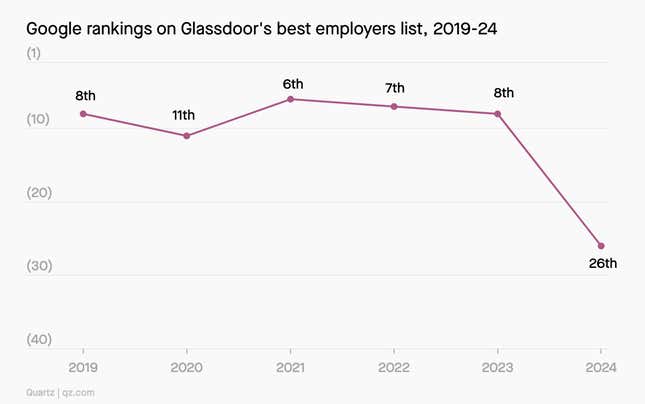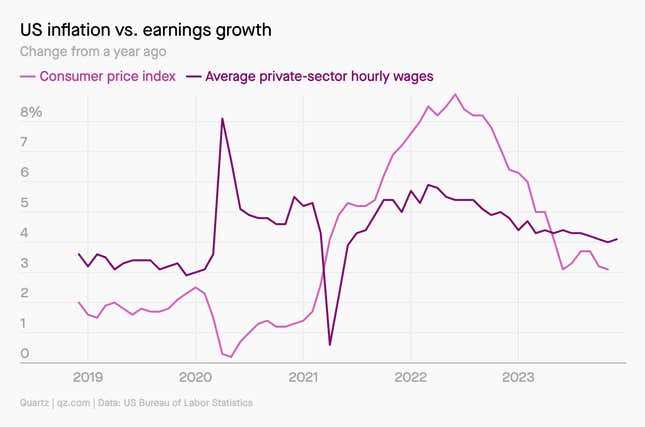Hello, Quartz at Work readers!
In retrospect, I knew my boss had mastered the art of the one-on-one meeting when his father wandered in wearing a tank top.
To be fair, we were meeting virtually: I was living in Washington, DC at the time, while he was working from the UK, where he and his family shared a home. My boss’s father, half-dressed and hunting for clean laundry, hadn’t realized his son was on a call. When he opened the door, my manager and I dissolved in hysterics.
I’d been at Quartz for well over a year at that point, and I looked forward to my manager’s one-on-one (or 1:1) check-ins every week. He’d long hit high standards. On my first day, he presented me with a personalized 1:1 document, where each week he’d record his updates and my achievements before we met. With it in hand, we jostled and joked; we talked earnestly about my ambitions; we logged and followed my growth. The paternal interruption simply surfaced an easy truth—over the course of our one-on-ones, my boss and I had forged a strong, trusting relationship.
“One-on-ones are really the meeting that should never be an email,” says Steven Rogelberg, chancellor’s professor at the University of North Carolina Charlotte and author of the new book Glad We Met: The Art and Science of 1:1 Meetings. That’s because one-on-ones carry real weight in how connected people feel to their work. But according to Rogelberg, my manager was a near-outlier—a lot of leaders aren’t getting these sit-downs right.
While hundreds of millions of one-on-ones are held around the globe every day, his research finds there’s a fundamental disconnect. Team members rate nearly half of their one-on-ones as less than ideal; meanwhile, managers overestimate just how well the check-ins they lead go.
Rogelberg’s work is based in a trio of his own studies, including a survey of 1,000 white-collar workers around the globe, a US-based survey of 250 people who lead or join in one-on-ones, and more detailed interviews with about 50 executives at companies like Google, PepsiCo, Deloitte, and Bank of America.
The best predictor of a one-on-one that’s not working? It’s when bosses talk too much. It’s a common pattern, Rogelberg says. The more we contribute to a conversation, the better we later think it went. But when managers dominate a one-on-one meeting, that’s counter to its aims—getting their direct reports to share.
Instead, he suggests, managers need to ask more questions, like What’s on your mind? What are your biggest obstacles and challenges? What are your thoughts on how to handle this? How can I support you? “You’re putting the ball clearly back in the direct’s court. And by doing so, you’re elevating the experience for [them] and improving the overall effectiveness,” he says.
So how do your meeting skills stack up as a manager? Take our quiz, excerpted from Rogelberg’s book, to understand how well you’re holding one-on-ones—and figure out how those check-ins could go a lot better.
IT’S NOT ALL TALK
Once you’ve scored your own one-on-ones, Rogelberg offers a few additional tips to help managers make their meetings effective.
🗓 Consider cadence. When asked how often they like to have one-on-one check-ins, employees are most likely to pick weekly meetings that last about 30 minutes. Weekly one-on-ones, Rogelberg adds, also correspond to the highest levels of engagement at work. Behind that is the biweekly one-on-one, where you meet for 45-60 minutes; monthly one-on-ones are least preferred.
🌀 Approach “how are you doing?” with a twist. Starting a meeting with this question usually leads to pleasantries, not specifics. Instead, managers should ask reports to rate how they’re doing from 1 to 10—which offers a more meaningful starting point.
🚗 Don’t drag anyone to an office. Are your check-ins less personal over Zoom? Nope. Rogelberg’s research finds that employees find about the same value in their one-on-ones whether they’re virtual or in-person. “What really matters,” he says, “is just how the manager runs the meeting.”
FIVE THINGS WE LEARNED THIS WEEK
Fewer Americans are calling it quits. The number of people who voluntarily left their jobs fell at the end of 2023, according to new data from the US Bureau of Labor Statistics—and the quit rate now resembles pre-pandemic levels.
Microsoft’s AI assistants will soon draft your emails at the touch of a button. The tech giant is changing its keyboard for the first time in three decades—by adding a Copilot key, which calls up the chatbot with one tap.
3M is putting pension plans on ice. Following companies like General Motors, Boeing, FedEx, and more, it’s rolling non-unionized workers into 401(k)-style options instead.
Garment employees sewed up a victory for overtime pay. Contract workers at Beyond Yoga sued the athleisure brand for holding out on overtime wages, then landed a record $1.1 million settlement last week.
Sin City could be a great place to make career moves. Las Vegas is just one of three metro areas where jobs are growing fastest in the US.
BAD NEWS FOR BIG TECH
Big tech companies—once the cardholders of cushy perks, plump paychecks, and industry stability—are slo-o-o-owly sliding in their employees’ esteem.
Glassdoor’s Best Places to Work in 2024, which uses worker feedback to rank the top large companies in the UK and US, saw some tech-y list-toppers slip from their high perches this year. Google and Microsoft? They took a tumble. Meta, Zillow, and Zoom? For the second year running, they have no place on the list.

That certainly couldn’t have anything to do with the tech industry’s liberal use of layoffs last year, could it? You know the ones. The ones that dropped more than 260,000 employees across the industry in 2023? Or the ones that cut 2,000 more jobs in the first nine days of 2024? No, no, that certainly wouldn’t change employee morale.
Quartz’s Laura Bratton reports on how big tech is dropping down top employer rankings—along with the surprising stalwarts holding their spots on the lists.
ARE YOU HEADING TO DAVOS?
🏔️ If you’re almost every person, the answer is “LOL, no.” The World Economic Forum’s annual meeting in the Alps brings together powerful people in the public and private sectors to talk about the state of the economy (and all sorts of other things) while sipping on hot chocolate and hunting down the best raclette.
But we’ll be there, feverishly bringing you updates about who’s saying what, and who’s pointedly not saying what. Click over to our Need to Know: Davos 2024 page to sign up for our newsletter, and see a sampling from last year.
The WEF runs from Jan. 15 - 19 this year and, as always, our Davos email—unlike a ticket to Switzerland—is free!
JUMPING FOR JOLTS

The latest US jobs report has good news for workers: Their paychecks are feeling heftier than they have in a while.
As the Federal Reserve has been focused on paring back inflation, data shows the efforts are making an impact. According to its December jobs report, wages are once again rising faster than prices—and workers feel like their salaries are stretching further. As Quartz’s Melvin Backman writes, it’s a big mood-booster.
QUARTZ AT WORK’S TOP STORIES
🌍 How boards, investors, and workers can support CEOs who are willing to tackle climate change
🔨 Apprenticeships are headed off the shop floor and into the office
📈 From a worker perspective, the US jobs report shows the Fed is winning the inflation fight
🤝 Is joining a talent network ever actually worth it?
YOU GOT THE MEMO
Send questions, comments, and your best 1:1 snafus to talk@qz.com. This edition of The Memo was written by Gabriela Riccardi.
